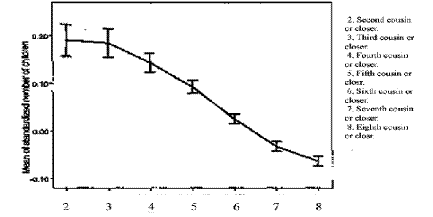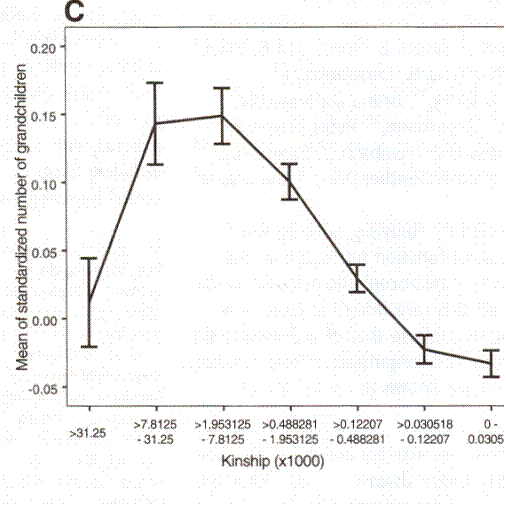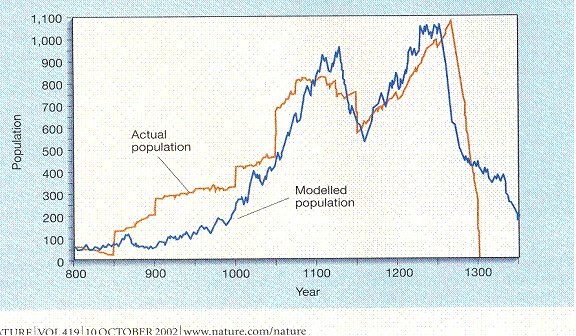
September 20, 2011
To be posted on nobabies.net
Richard Sharpe
MRC Centre for Reproductive Health
The Queen’s Medical Research Institute
University of Edinburgh
EH16 4TJ UK
r.sharpe@ed.ac.uk
Dear Richard Sharpe:
I am much impressed with your letter (Richard Sharpe Low Sperm Counts May Be Preventable SCIENCE vol.333 no. 6048 September 9, 2011 page 1380) about the importance of low sperm counts in Europe. I agree that a significant number (one in six) of young men with low sperm counts that depress fertility is not a matter to be dismissed as normal. And I am happy to learn of the “testicular digenesis syndrome hypothesis” that there must be a common cause for male reproductive disorders.
I think I know the cause, of which more in a bit. My primary reaction is delight that you should care. For years I have been taking an interest in fertility, and the most striking thing I have found is a spooky disinterest on the part of so many people, experts included. I congratulate you on the impulse to try to do something. In my book that puts you into the tiny category of best of the best.
Your bet is on some subtle and as yet unidentified factor or factors. That is wise. But there is a factor that is well established and anything but subtle that I rarely see mentioned. So forgive me if I presume to try to bring it to your attention.
And forgive me if I confound low sperm count and infertility. I don’t have the numbers. They would have to be put together by experts with substantial skills and resources such as … well … er … not to put too fine a point on it … such as you.
So warned, consider this graph:

Graph is from An Association between Kinship and Fertility in Human Couples, Agnar Helgason, Snaebjoern Palsson, Daniel Abjardson, Pordur Kristjansson and Karl Stefanson, SCIENCE vol. 319 February 8, 2008 page 813
The study draws on the Iceland genealogy. What they did was to look at couples and to calculate their kinship by going back 10 generations to see how many ancestors they shared at that distance back. Then they looked at how many children each couple had. The error bars are two standard deviations. They are extremely tight. Kinship determines fertility with little room for anything else.
Things get worse. Consider this from the same paper:

An Association Between Kinship And Fertility of Human Couples. Agnar Helgason, Snaebjoern Palsson, Daniel F. Guobjartsson, Pordur Kristjansson and Karl Stefanson, SCIENCE vol 319 8 February 2008 page 813 figure 3
Except for the significant, but usually not pathological, depression of grandchildren of couples more closely related than second cousins, it’s about the same graph. So most of the spread in the error bars on the first graph is accounted for by the effects of the second graph and vice versa. Between the two you just about exhaust all there is to know about fertility. There is simply no way to hide some other process affecting one in six men. For subtlety this is in the meat axe and charging rhinoceros category.
Obviously the grandchildren graph reflects post zygotic fertility. Then I think it is logical to assume that the first graph reflects pre zygotic fertility. Each must be an epigenetic mechanism as DNA just doesn’t change fast enough to do this.
As to why in the world evolution should have planted this limpet mine under us, I would suggest you look at nobabies.net for last March 18, the Vancouver poster. (In my more delusional moments I wonder whether indifference to the process is also a nefarious evolutionary plot.)
One reason I suspect that there is are both pre zygotic and post zygotic mechanism is that if you take a single population at let it grow without limit it will go extinct in about 10 generations following a curve that is stereotyped. Here is one well documented population analyzed by Jarred Diamond.

Jared M. Diamond, “Life with the Artificial Anasazi,” NATURE, vol 419 no 6907, October 10, 2002 p 567.
“Actual population” was found running around Longhouse Valley where these people lived and doing carbon fourteen dating on the embers in the fireplaces. “Modelled (sic) population” is in fact a record of tree ring width. I wrote Diamond and asked whether he thought maybe the Indians were cultivating the trees. I have yet to receive an answer. Perhaps I am not earnest enough for him. He wants to raise consciousness of the environment. I have no plan. He figures that the climate is causing the changes in the tree rings, and that in turn determines how many people the valley can support. But the vertical lines indicate that people moved in; even if the girls are very busy they can hardly double the size of the population in a single year. There are no vertical drops, at least not in the final plunge; nobody left. They just died out.
A fluke perhaps, but the same curve on the same time scale is also visible when you look at the survival of Chinese dynasties and Japanese dynasties. And since the curve is complex it bespeaks two mechanisms at work. Slick, no?
There is more data you can find by burrowing through the web site, or if you like I can go on. But you get the picture. Kinship. It seems all to be kinship. I think it would be prudent to take this into account when trying to understand fertility. You can probably come up with an idea for a study that would support or disprove it.
Sincerely,
M. Linton Herbert MD
By the way, I also sent a letter to SCIENCE but I imagine they have closed communication on the original letter. Here is what I wrote them:
September 23, 2011
SCIENCE
1200 New York Avenue NW
Washington DC 20005
Science_editors@aaas.org
SIR:
Richard Sharpe has pointed out (Richard Sharpe Low Sperm Counts May Be Preventable SCIENCE vol.333 no. 6048 September 9, 2011 page 1380) that the profound depression of sperm counts in so many European men is a serious matter and has made suggestions as to where to look for a cause. One strong possibility is that low sperm counts correlate with low fertility caused by mating of insufficiently related couples as described in an Icelandic genealogy study. (A. Helgason et al., Science 319 813 (2008))
Sincerely,
M. Linton Herbert MD
There have been 25,222 visitors so far.